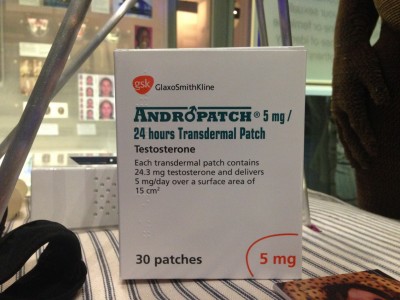This ancient supplement can give you massive muscles, a bigger brain and improve your sex life. It sounds like click-bait, but the contents of this box may be able to boast these claims as fact. It is, of course, testosterone.

Testosterone is a naturally occurring hormone, a chemical messenger circulating in the body, communicating between organs and tissues. It is seen as the main male sex hormone; its function in men is to control production of sperm, and to develop characteristics we tend to think of as ‘manly’.
However, it is not only men that produce it. Male, female, non-binary, transgender… everyone needs testosterone. In fact, we don’t just have it in common with each other. Testosterone is an ancient hormone which developed early in evolutionary history. Mammals, reptiles, fish and birds all have it too. Doctors used animal testosterone as early as the 19th century, before it had even been named and recognised in humans.
Testosterone helps our bodies grow, repair muscle, increase body hair, and prevents bone loss. Men’s testosterone levels tend to be about seven times greater than women so the effects are increased. Testosterone can also influence our behaviour, for example how likely we are to take risks. One study showed that if testosterone levels are either too high or too low then both men and women are more likely to take a financial risk.
Advancements in technology mean scientists can measure testosterone levels cheaply and easily via saliva, and explore its interactions with the brain. Scientists have also found out that how we behave can affect our testosterone levels. Sitting in a wide, open posture can increase testosterone levels regardless of gender, and for men even voting for the winning candidate in an election does the job.
The first synthetic testosterone became commercially available in late 1930s. The small, white, cardboard box we have on display is just the tip of the iceberg. Inside is the Andropatch, a testosterone skin patch which was prescribed to raise levels of the hormone in adult men whose bodies did not produce enough of it (hypoandrogenism). It’s just one of many examples of how people use synthetic testosterone, which started life as a cure for sexual dysfunctions.
Today it is used by people whose bodies don’t make enough testosterone because of age (andropause and sometimes menopause), people whose bodies don’t produce any testosterone, transgender people who want to medically transition, chronically ill people who benefit from the side-effects of testosterone (such as suppressing the oestrogen cycle or increasing strength) and people who have had their ovaries/testes surgically removed. Testosterone has also been the basis for a number of drugs used to treat gynaecological conditions such as endometriosis.
Beyond the medical uses of testosterone, its illegal use by some bodybuilders and athletes to build muscle and stamina has cast a shadow over its use. However, synthetic testosterone has been just as much of a liberating medical advancement as other synthetic hormone use, such as the contraceptive pill and hormone replacement therapy(HRT) for menopausal women and transwomen.
Synthetic testosterone has helped to change the lives of so many people whose bodies, for a huge variety of reasons, don’t produce appropriate amounts.
What will the liberating medicines of the future look like?
You can see the Andropatch in the Who Am I? gallery, on the first floor of the Wellcome Wing in the Science Museum.
Gabriela Fabrowska is a member of the Learning Support Team.